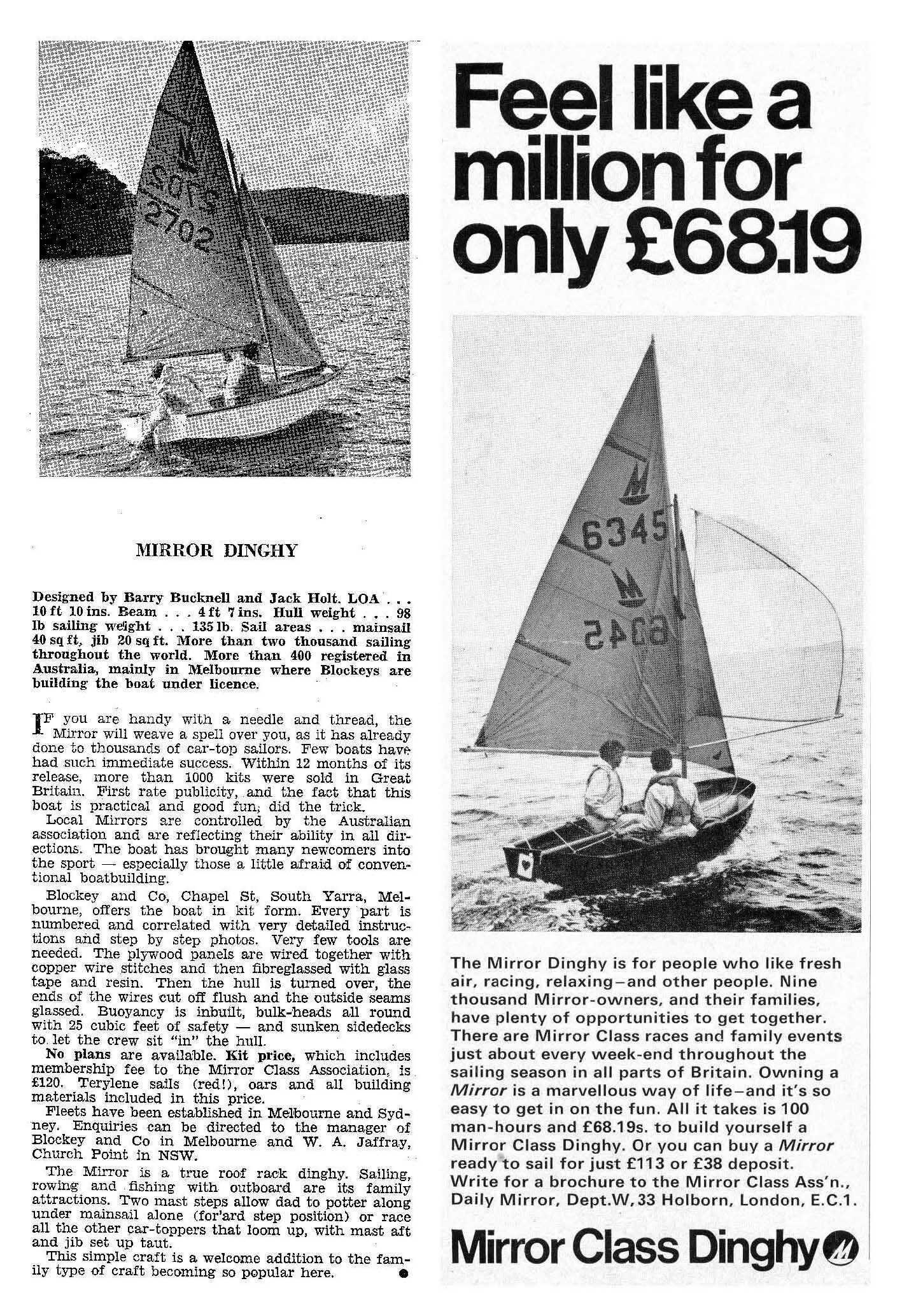Reflections and Mirrors
Mirrors at Somers Yacht Club in the 1970’s
“Down through the ages the British have been a seafaring people. Sailing is in our blood – the very fibre of our character. Until recently, however, only the wealthy have been able to get the health and happiness that a good boat brings.”
The red sails of the Mirror dominated dinghy sailing in the UK and Australia from the 1960’s with over 71,000 boats now registered worldwide. It’s estimated that a staggering 8,000 have been constructed in Australia with Victoria the stronghold.
By the 1970’s Somers YC on Western Port had 110 and Albert Sailing Club on Melbourne’s Albert Park Lake introduced a cap of 100 to control the red rash. Large fleets sailed from Mordialloc YC on Port Phillip and Blairgowrie on the Mornington Peninsula. Fleets were built at Balmoral in Sydney and Nedlands YC in Western Australia where numbers were capped at 123. The mighty Mirror might be about to undergo a revival in 2020’s Australia.
The origins of this little 11ft pram bowed boat are unusual and its universal success was underpinned by access to an inexpensive DIY kit that when assembled proved to be a versatile family boat. The ply construction made her easy to build, light to lift, a lively yacht to sail, a stable boat to row or attach an outboard for fishing and transportable on a roof rack.
It all started in the UK with a television celebrity Barry Bucknell in the early 1960’s. Bucknell’s House was a popular BBC program for DIY renovators. Every week over 10 months, Barry showed how to modernise an old Victorian terrace in Ealing, West London. The Bucknell family were dinghy sailors and Barry wanted to design an easy to build boat without frames and ribs used in traditional construction. He knew about a new method for building lightweight canoes using ply that could be easily jigged out then joints stitched together with copper wire covered with tape & resin. Bucknell quickly realised his ideas and built the M1 prototype.
Bucknell happened to drink with Daily Mirror feature writers in a local Ealing pub. The Mirror was the largest circulation tabloid in the UK and was keen for a project. Sailing had recently topped a poll of English leisure activities so Bucknell suggested his DIY dinghy, built by anyone at home, might fit the Bill. Sailors and journalists at the Mirror liked the idea and decided to sponsor and promote the boat. The editor at Yachting World advised Bucknell to collaborate with Jack Holt to underwrite the project.
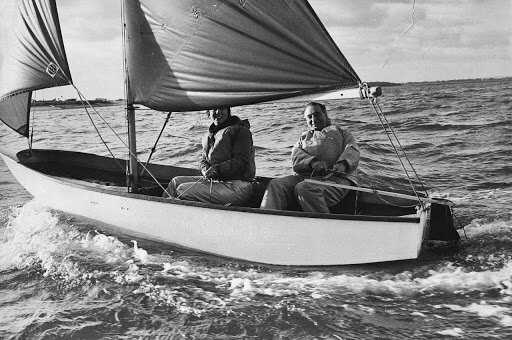
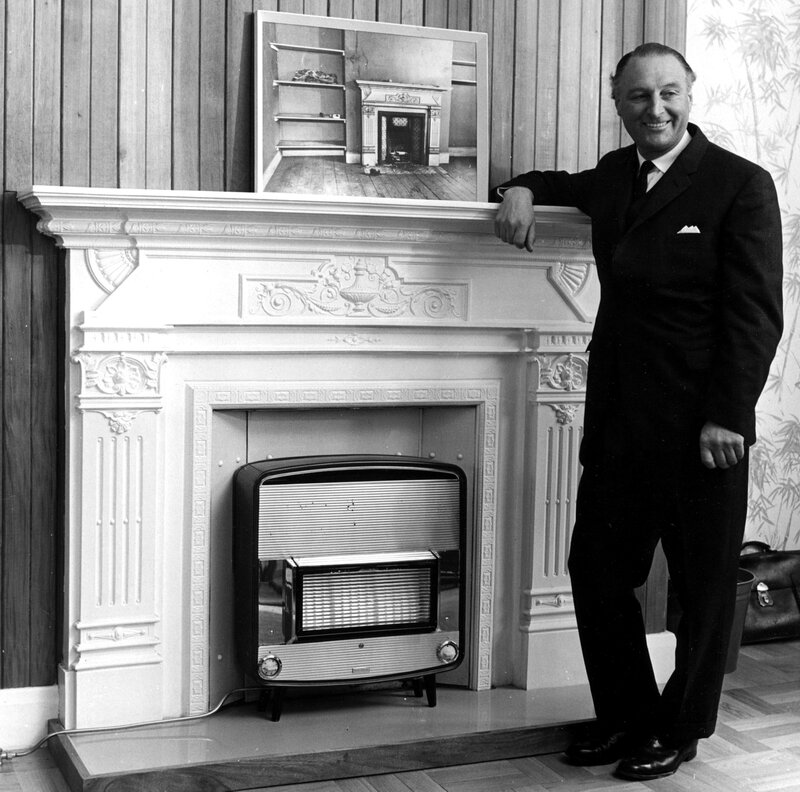
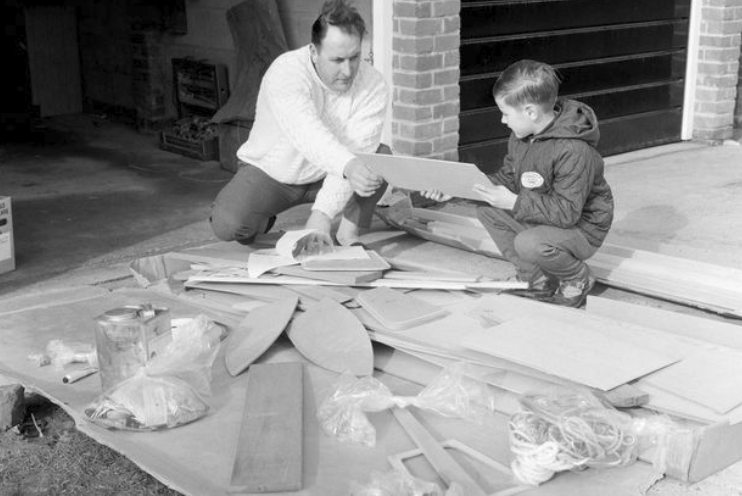
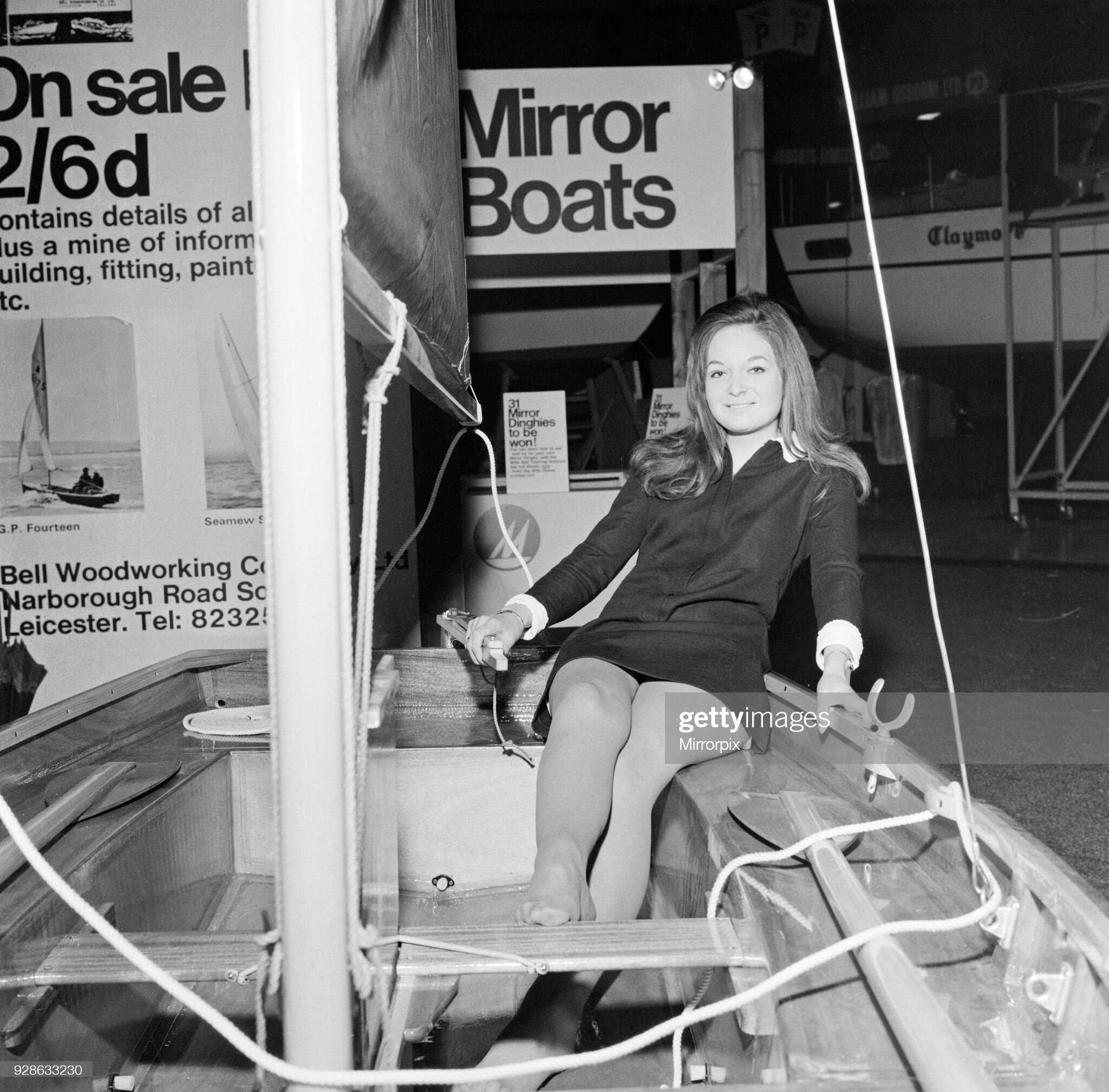
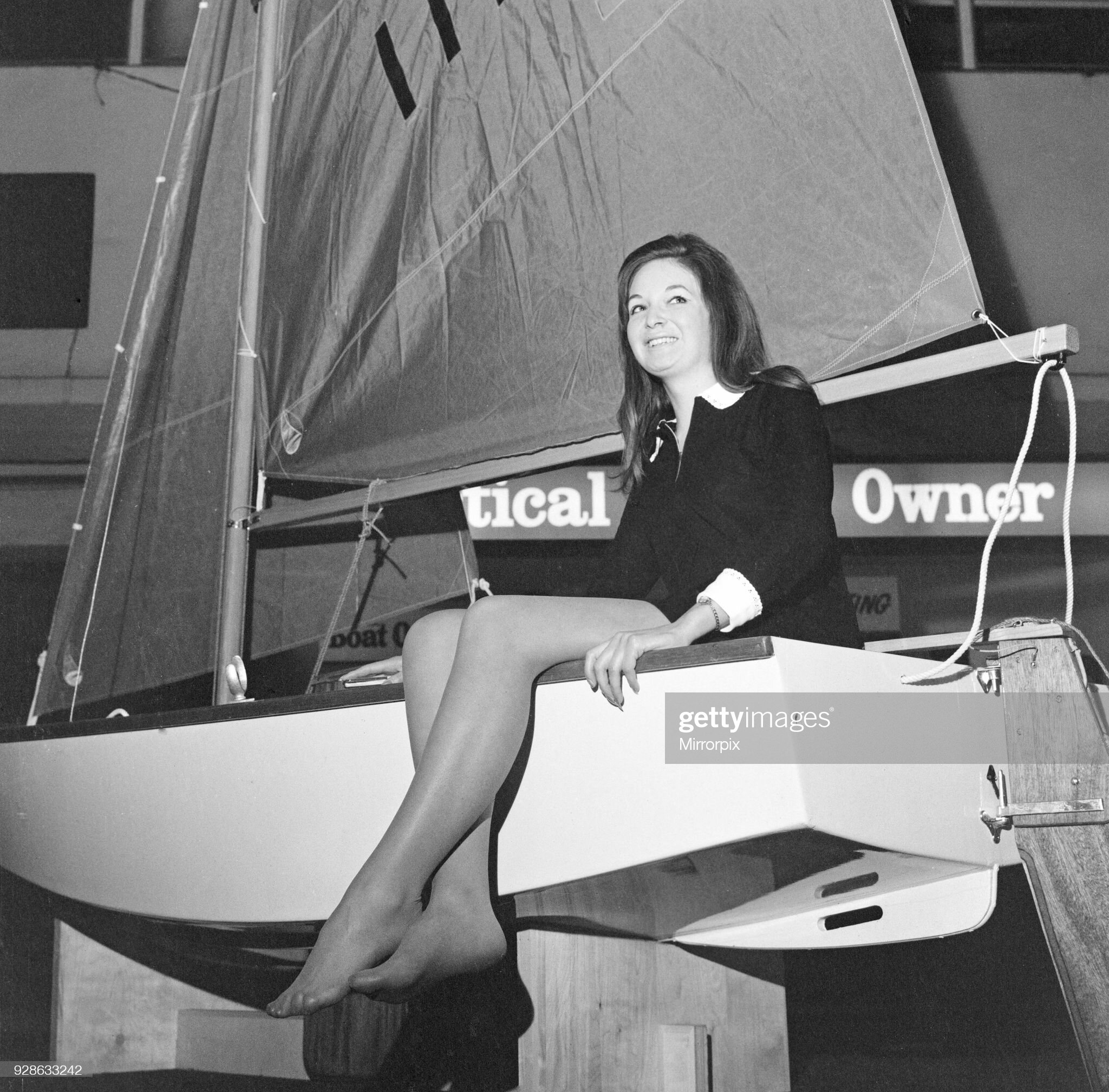

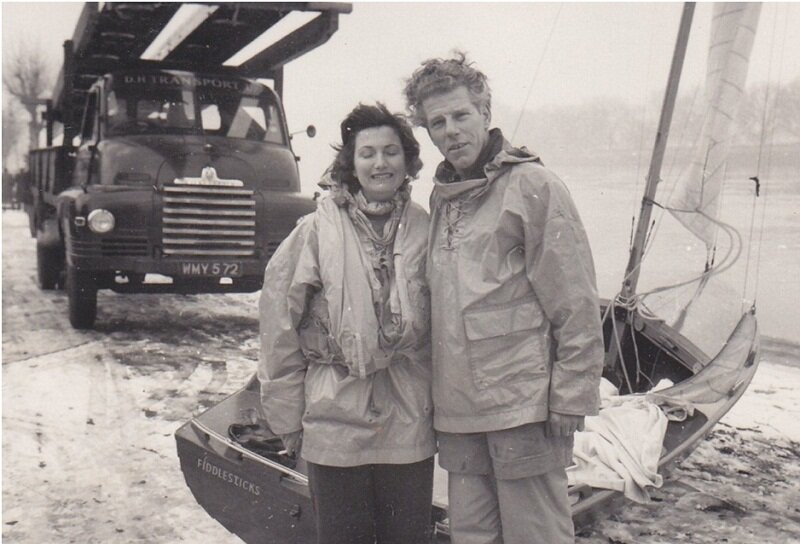
Holt was an experienced dinghy designer (Hornet, International Cadet, Heron, YW Diamond) and his partner Beecher Moore was a respected international sailor and skilful organiser and promoter of amateur dinghy sailing. Both were keen to dissolve the English class split with gentry sailing at Yacht clubs and workers at Sailing clubs. A popular family dinghy might do that and kids, once on the water didn’t care about class. Holt already had experience of the task required for the Mirror after designing the Cadet in 1947 specifically for boys and girls of 8-16 years. This boat is still popular around the world.
Successful projects suffer false claims from many authors but with the Mirror dinghy it was a true collaborative. At Jack Holt Ltd, a shed on the Thames at Putney, Holt designed the final Mirror lines and with Bucknell set about sorting assembly diagrams for a kit of braced boxes and bulkheads clad with soft curved ply sheets meeting at simple chine junctions. The cut-off pram bow removed the difficult tight curves needed for a pointy bow while the gunwales rose 6 inches above the bulkhead seats giving the crew a sense of sitting in the boat rather than on the boat.
Moore proposed the Gunter rig rather than a sleeved main on a Bermudan pole. This allowed all the spars to sit inside the boat when packed away. Holts team worked with Bell Woodworking to manufacture the pre-cut ply kit and the Allen Bros to develop lightweight inexpensive dinghy fittings that soon became Holt Allen, still going today. The final Mirror specification was 3.3m LOA, 1.4m beam with a hull weight of 45kg and 55kg when rigged.
Seacraft Magazine- 1966
The Mirror’s marketing department got behind the project with an inspired request that the newspaper’s masthead red be used for the sails made by Jeckells. The Daily Mirror dinghy was launched at the 1963 Earls Court Boat show sponsored by a rival tabloid, the Daily Express, that insisted “Daily” was masked ... so the boat simply became known as ….the Mirror. The Mirror journalists got stuck into some classic period copy and presentation.
“The Mirror Boat is a revolutionary idea that makes sailing cheap for everybody. Imagine a boat of your own. A passport to freedom and fresh air. You don’t need a licence. You don’t need a number plate. You can race her or take the whole family cruising and carry her on the roof of a Mini.”
“All the fun of messing about in boats. Build it yourself from the kit. Easiest on the pocket and the easiest job you’ve ever tackled. And remember she weighs less than most wives. The Mirror is a true car-top dinghy. Yours in kit form for just £68.19 cash.”
Advertising flyers showed the Mirror on the roof of a Mini Minor and a Hillman Imp. These very English cars from BMC and Rootes, like the Mirror dinghy represented the revival of British industry making modern stripped down affordable products accessible to everyone. The Mini, and hopefully soon the Mirror, has been successfully updated and born again.
The Mirror in Australia - Blockey the Boatbuilder
The first Australian Mirror was FLECK #856 built from a kit purchased by Frank Buxton from Jack Holt Ltd in 1964. Simon Greig a plywood supplier in Melbourne built the boat and his company Blockey’s negotiated with Holt to hold the Australian license for the Mirror. Greig imported kit #2500 used to make the first templates. The Mirror revolution was taking off in Australia with some 700 kits sold in two years.
SWS recently interviewed Phil Johnson, a Blockey apprentice from 1968-’73. Phil has just built a beautiful Mirror for his grandchildren called SWALLOWS & AMAZONS (More in Part 2). After leaving school in the 60’s, he wanted to work for Bruce “Stumpy” Keir (famous for furniture quality Fireballs and Cherubs), but Seaford was a long train ride for a boy from Glen Waverley. Phil talked to SWS about Blockey’s system that replicated the integrated delivery pioneered by Holts in London.
Phil Johnson with SWALLOWS & AMAZONS
Blockey the Boatbuilder operated from a shopfront at 448 Chapel Street South Yarra (now an expensive and fashionable cafe and hairdressing strip). There were 3 windows - a showroom with a fully rigged Mirror 10 and other stock boats including a Mirror 16 and a Mosquito cat, then the Blockey office with Frank Hammond Sails and a chandlery, The Bosuns Locker. Its unimaginable today to think you could buy a boat from a shop window on Chapel Street. Yet during the 1960’s and 70’s these commercial strips were supported by lots of small warehouse factories in the side streets of South Yarra and Prahran.
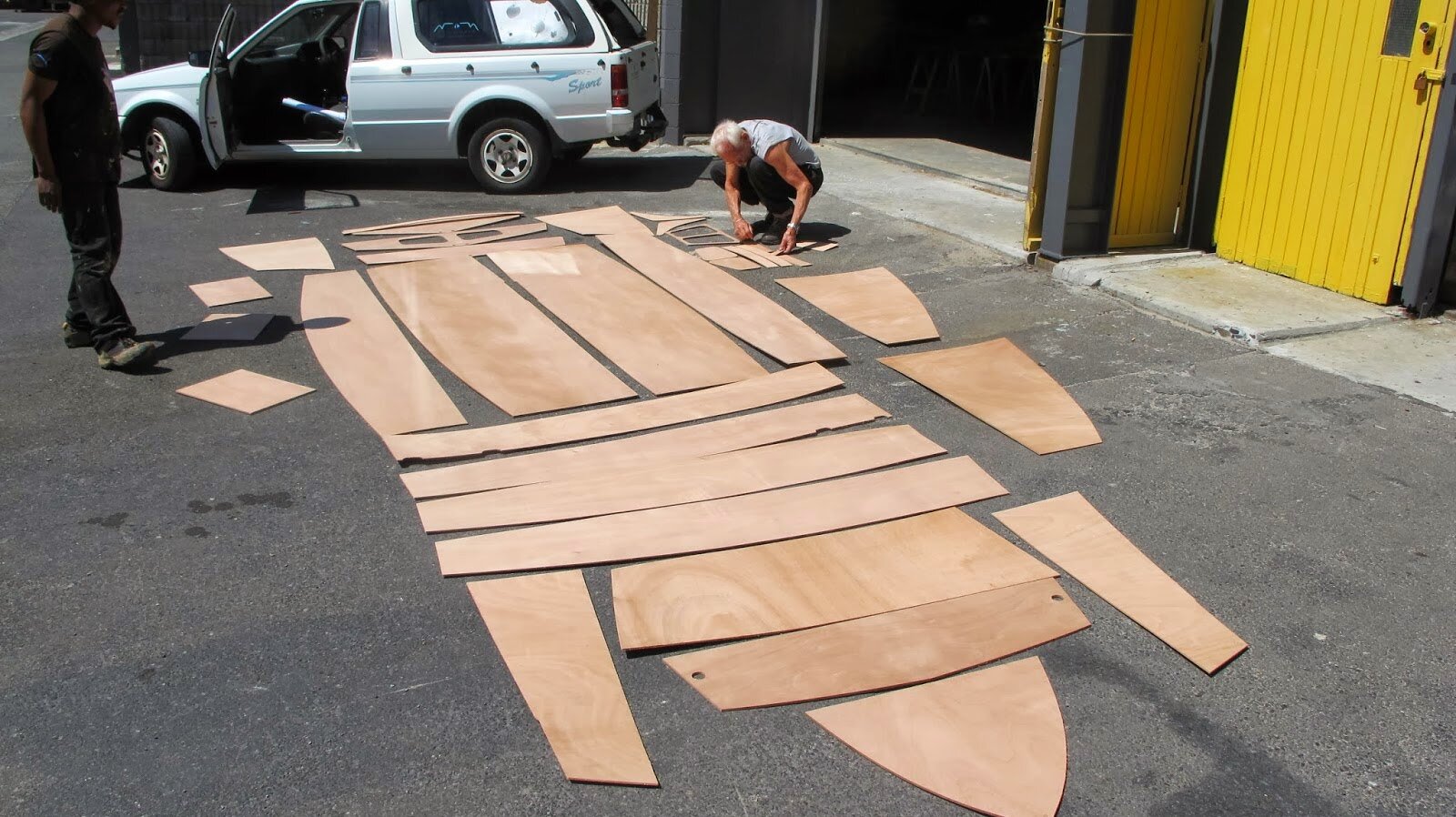

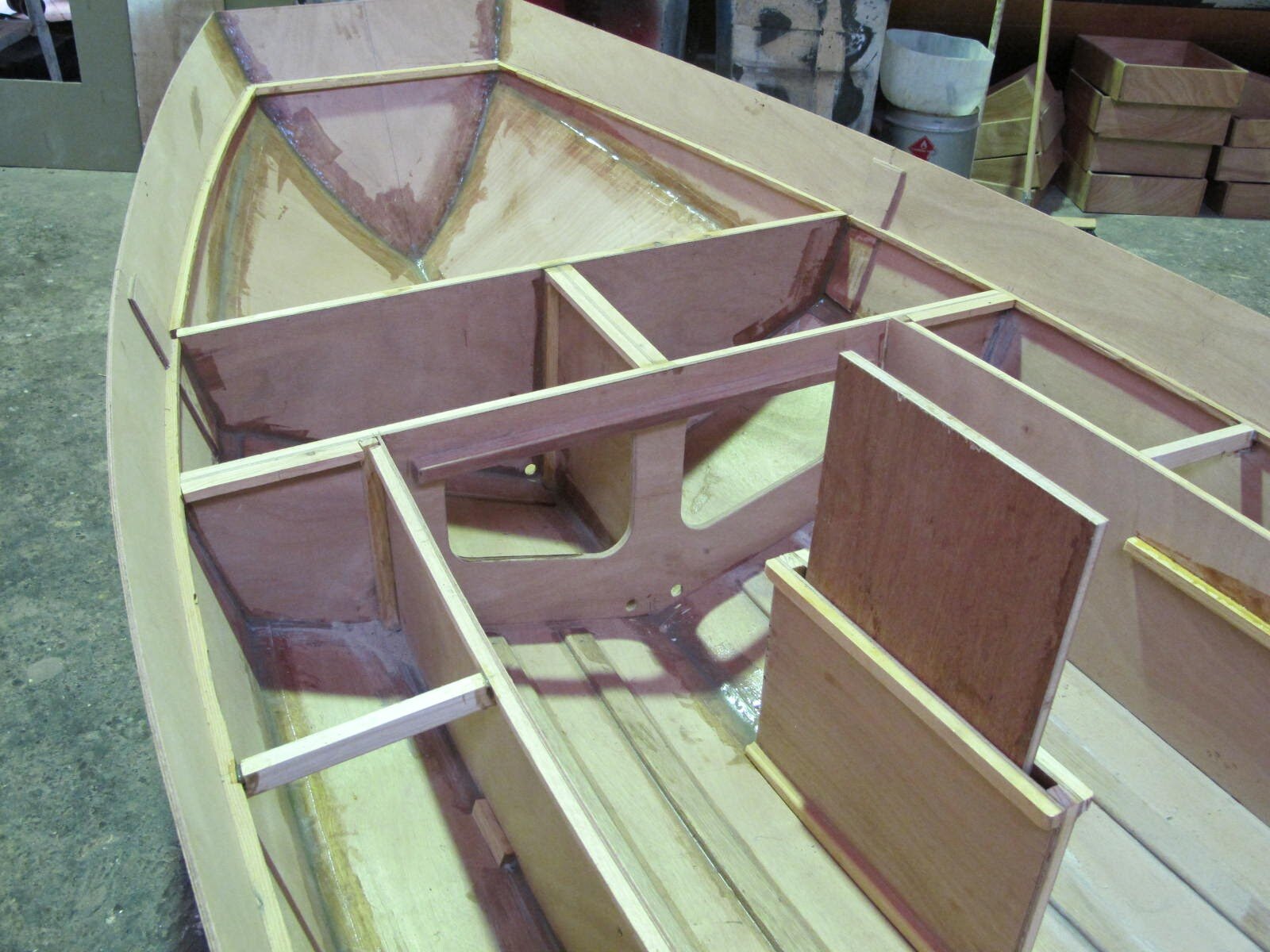
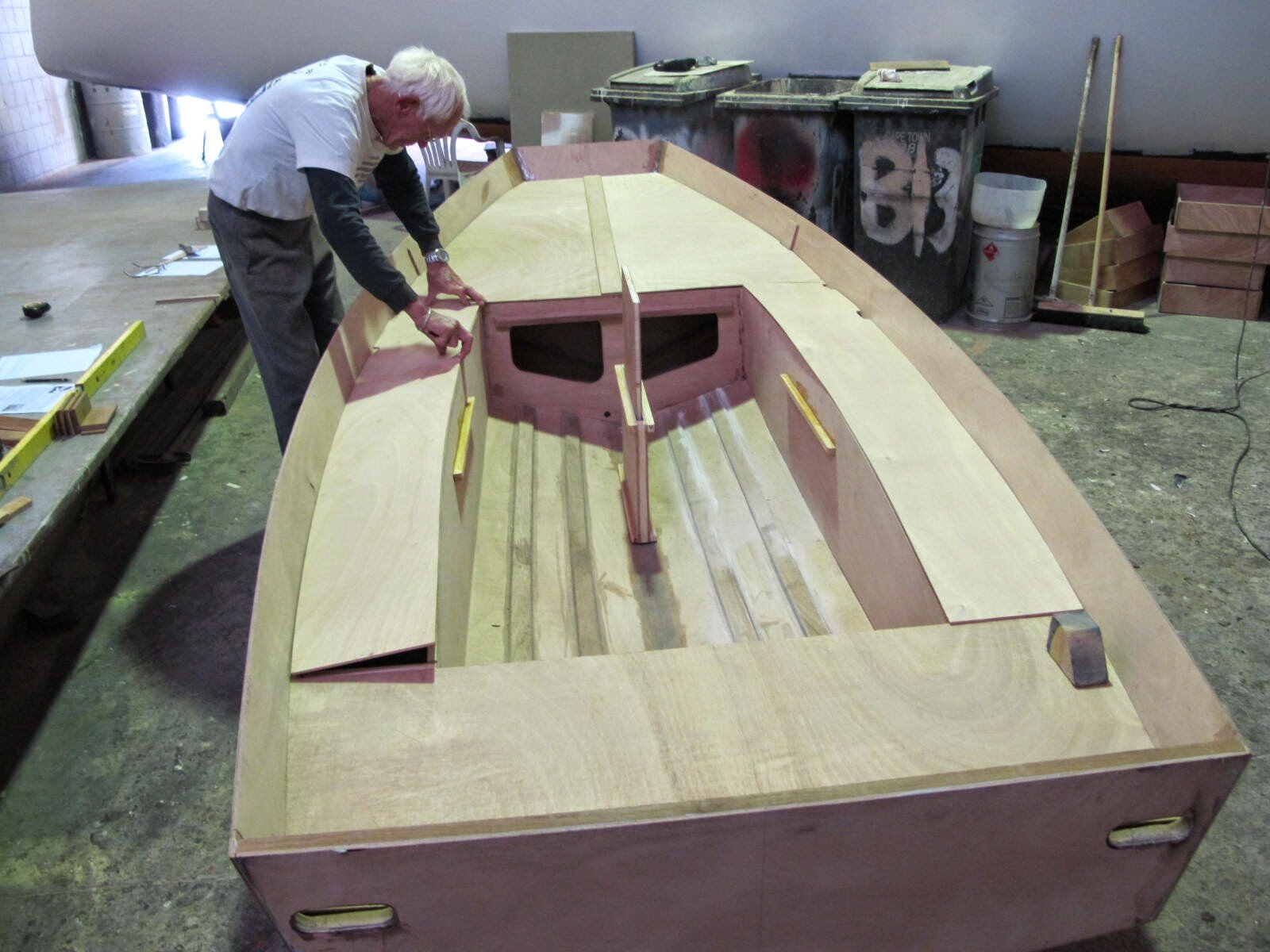
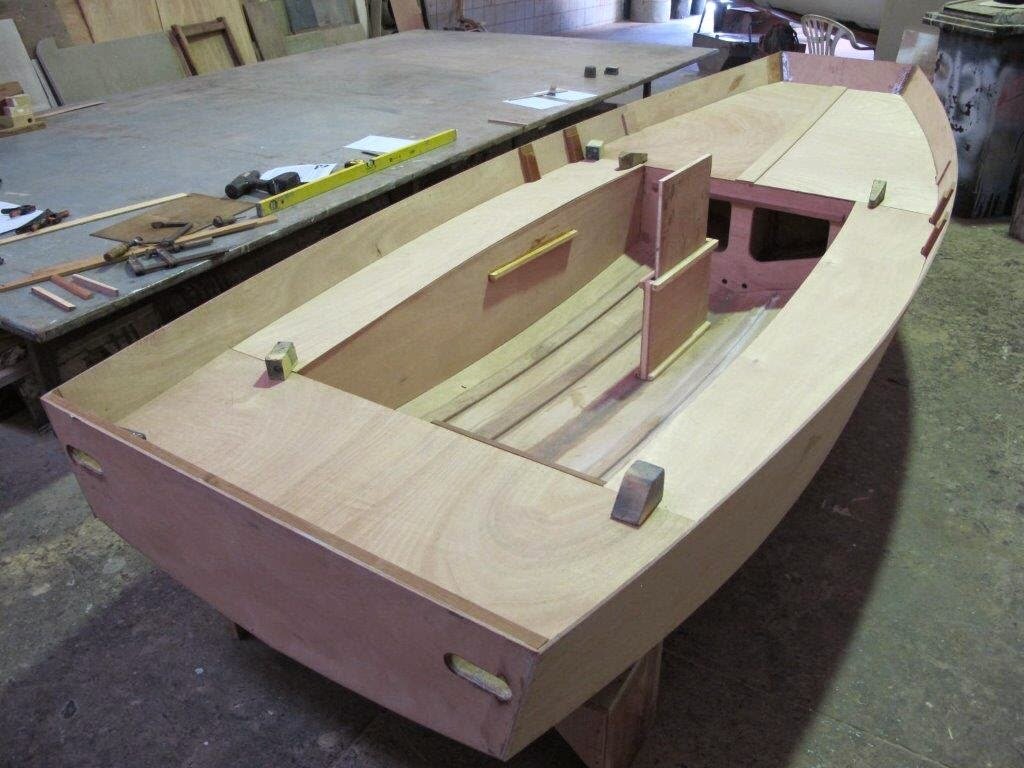
The Blockey kit system started in the machine shop behind the showroom with Tony and Wally, the Austrian joiners routing stacked 6mm ply pieces using the templates. The spars were made on a spindle moulder including an integrated bolt guide on the tapered gaff. The finished ply stacks and spars were then moved across the laneway to a store where a pick-n-pack racking system was set up. Above the store, Phil was doing a bit of everything - assembling hulls with stitch and glue, hand painting and varnishing, swaging up rigging and fitting the Ronstan gear supplied by The Bosun to meet orders for complete boats. Ronstan in Highett near the beachside yacht clubs, was also building business on the dinghy boom, designing, developing and fabricating basic fittings.
In the store kits were regularly picked and packed against a methodical check list. All the ply parts, including the rudder and dagger board were flat-packed in an 8ft cardboard box. The 10’ spars and oars were rolled and sleeved and the wires, running rig, fittings and sails (still supplied by Jeckells UK) were bagged with building instructions, measurements and a registration certificate. The kit cost $315 in 1970 (about $3,790 today).
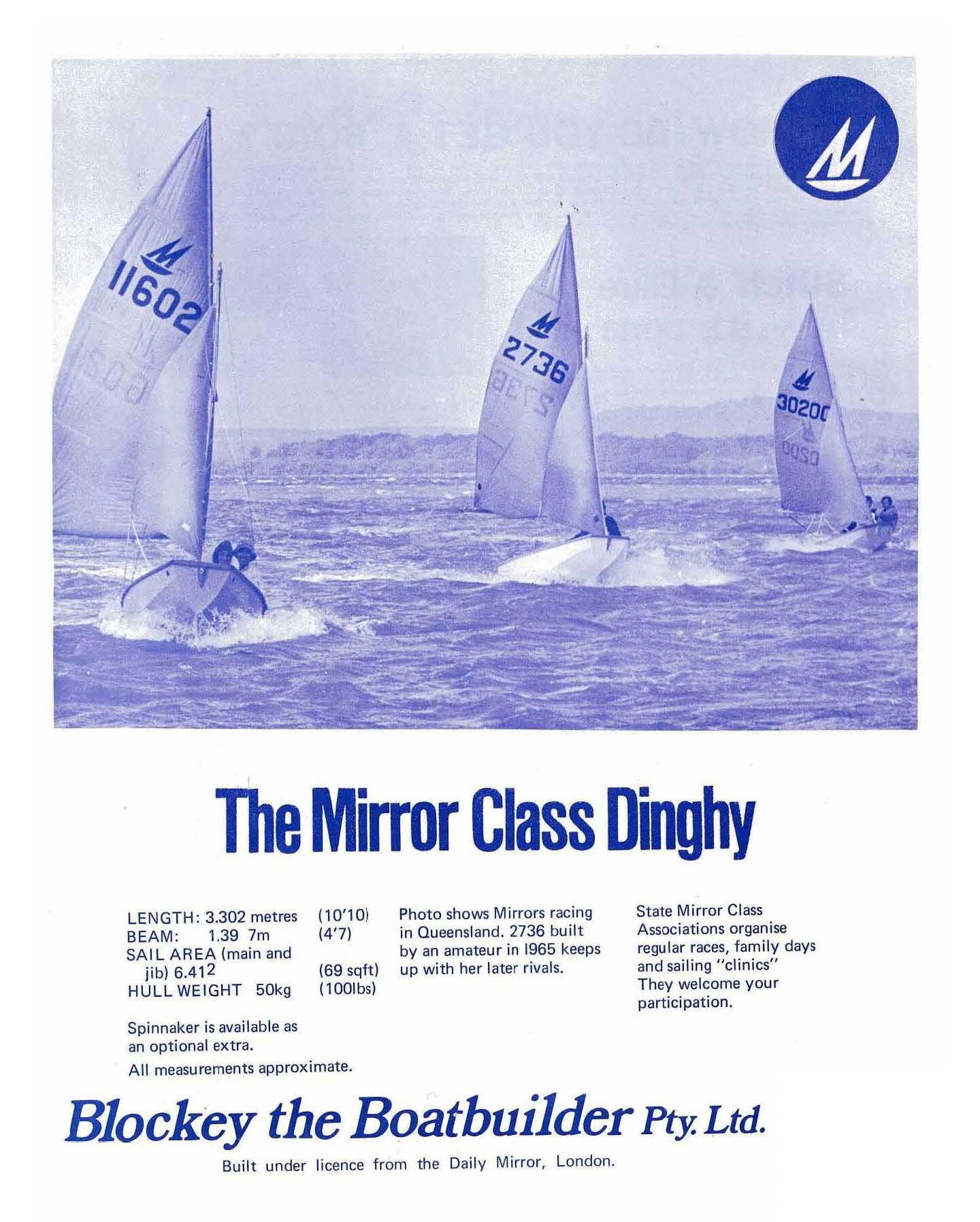
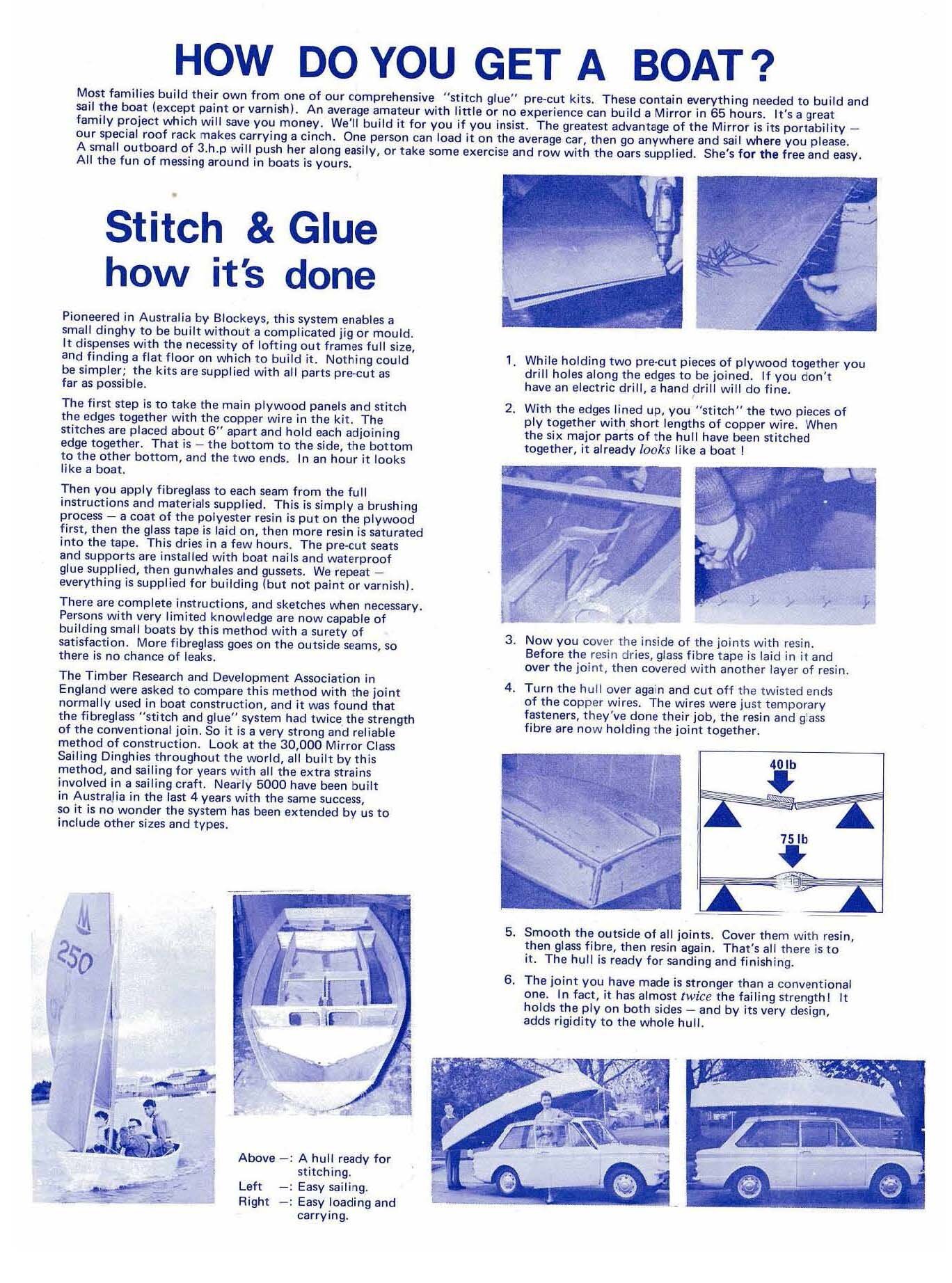
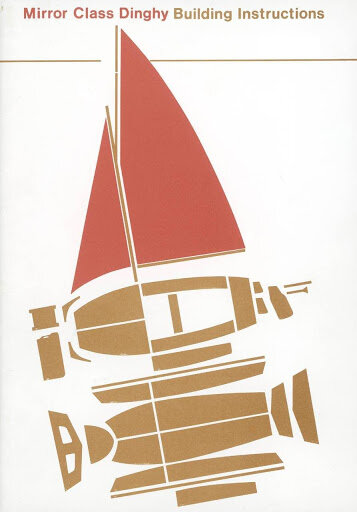

If a sale was made in the showroom the kit could be loaded in a station-wagon or tied to a roof rack. Blockey also supplied a large range of accessories and services to complete the family boating package - roof racks or trailers “specially for Mirrors” $165, launching trolley $16.50, LiLo beach rollers $25 and a 1½ hp Seagull outboard for $233. By the early 1970’s with 12 staff, Blockey the Boatbuilder was pushing through some 50 kits and 2 finished Mirrors a week.
1970’s Mirror Sailing in Australia
These are pre-Laser days when off-the-beach family sailing was booming. Kids often started in Sabots or Minnows in Melbourne and Manly Juniors in Sydney. A teenager’s next boat choice was usually made in favour of the fleet at their club or by buildability and price. The Heron, International Cadet or Mirror were the usual choices in Melbourne (all Holt boats) while the Vaucluse Junior was popular in Sydney. The Heron was prolific but had no spinnaker and cost almost double the Mirror. The Cadet was slightly heavier and more challenging to home-build on frames, leaving the inexpensive Mirror with its full set of sails and simple stitch & glue construction as the popular family choice (paid for by Dad).
During the 1970’s and 80’s Mirror fleets averaged 80+ boats at the Australian nationals, with the largest fleet of 118 at the 1985/86 Championship at Mordialloc in Victoria. Hosting of the competition rotated between Victoria, NSW, Tasmania, South Australia, ACT and WA who all had strong local fleets at the time with interstate boats usually contributing 50% of the fleet.
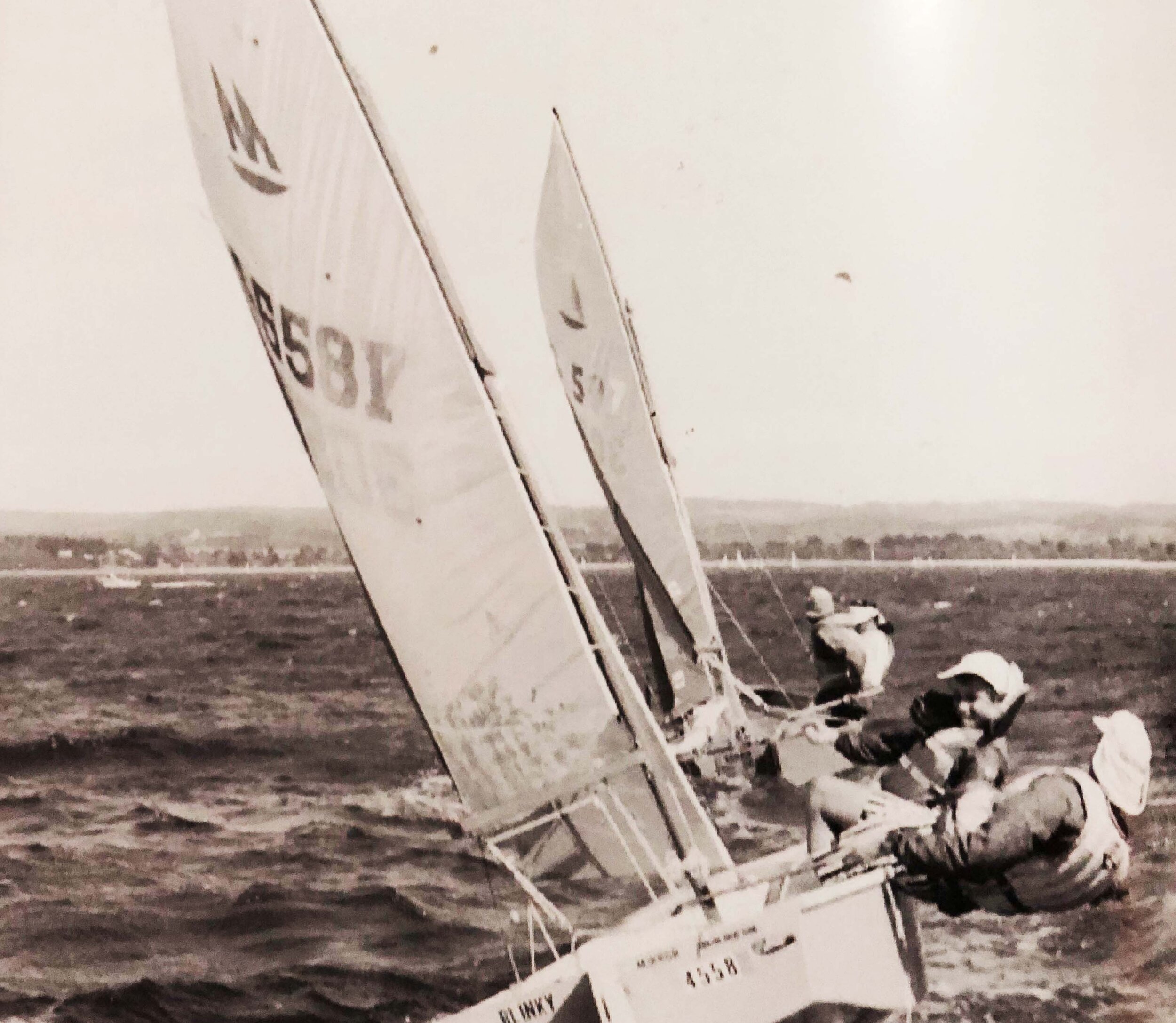
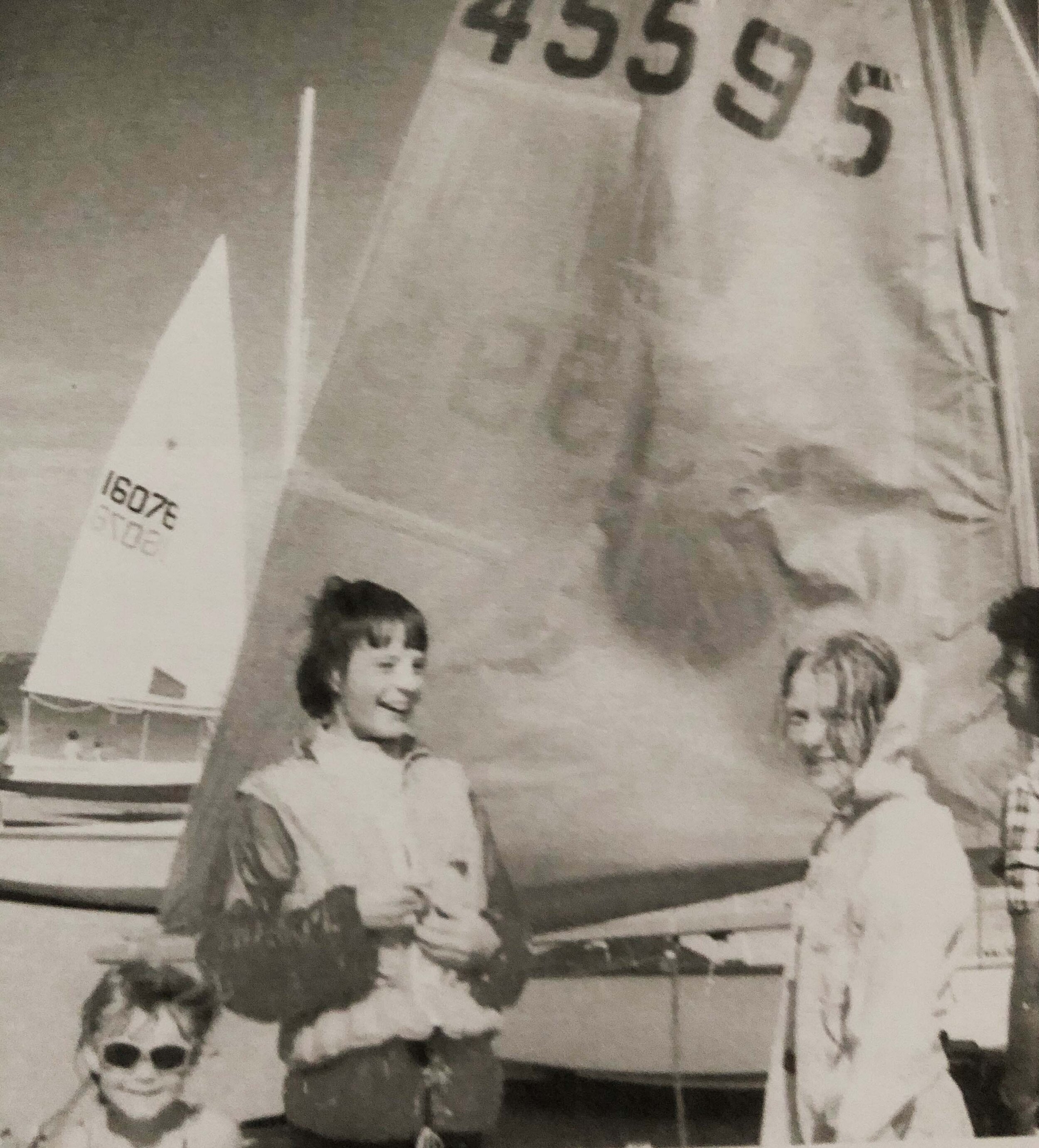
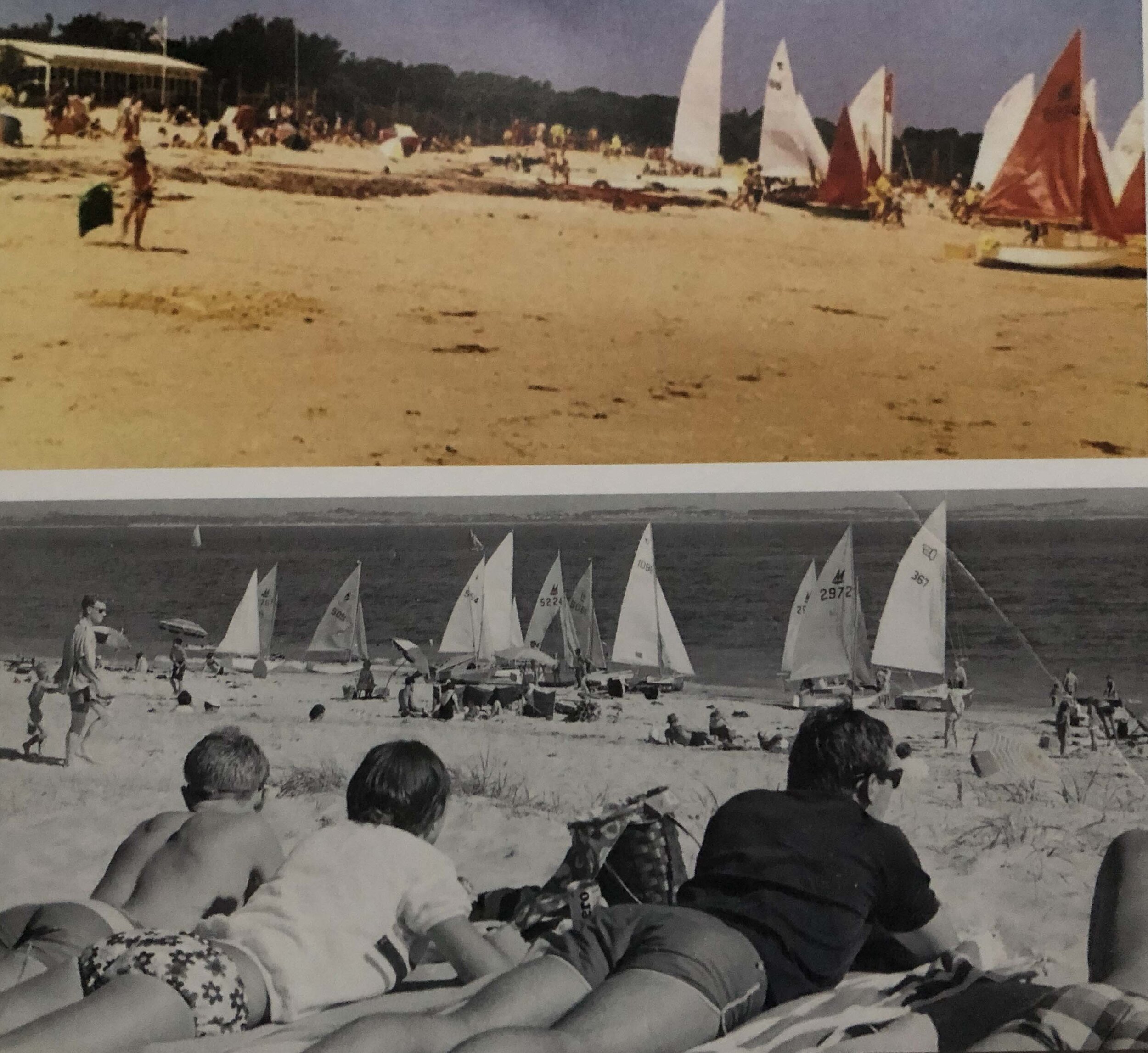
The templated kit system ensured the Mirror was a true one-design. Yachts from each state were all the same leaving the skill of the crew to make the difference. By comparison, measurement rules for the International Cadet were deliberately flexible (say +/- an inch) to accommodate professionally built boats while not discouraging home-built boats.
The Mirror’s popularity saw racing with various competitive crew combinations and weights. Most of the successful crews were adult-child combos (often Dad with son or daughter) while crews of two larger teenagers were always in the mix. The very large competitive one-design
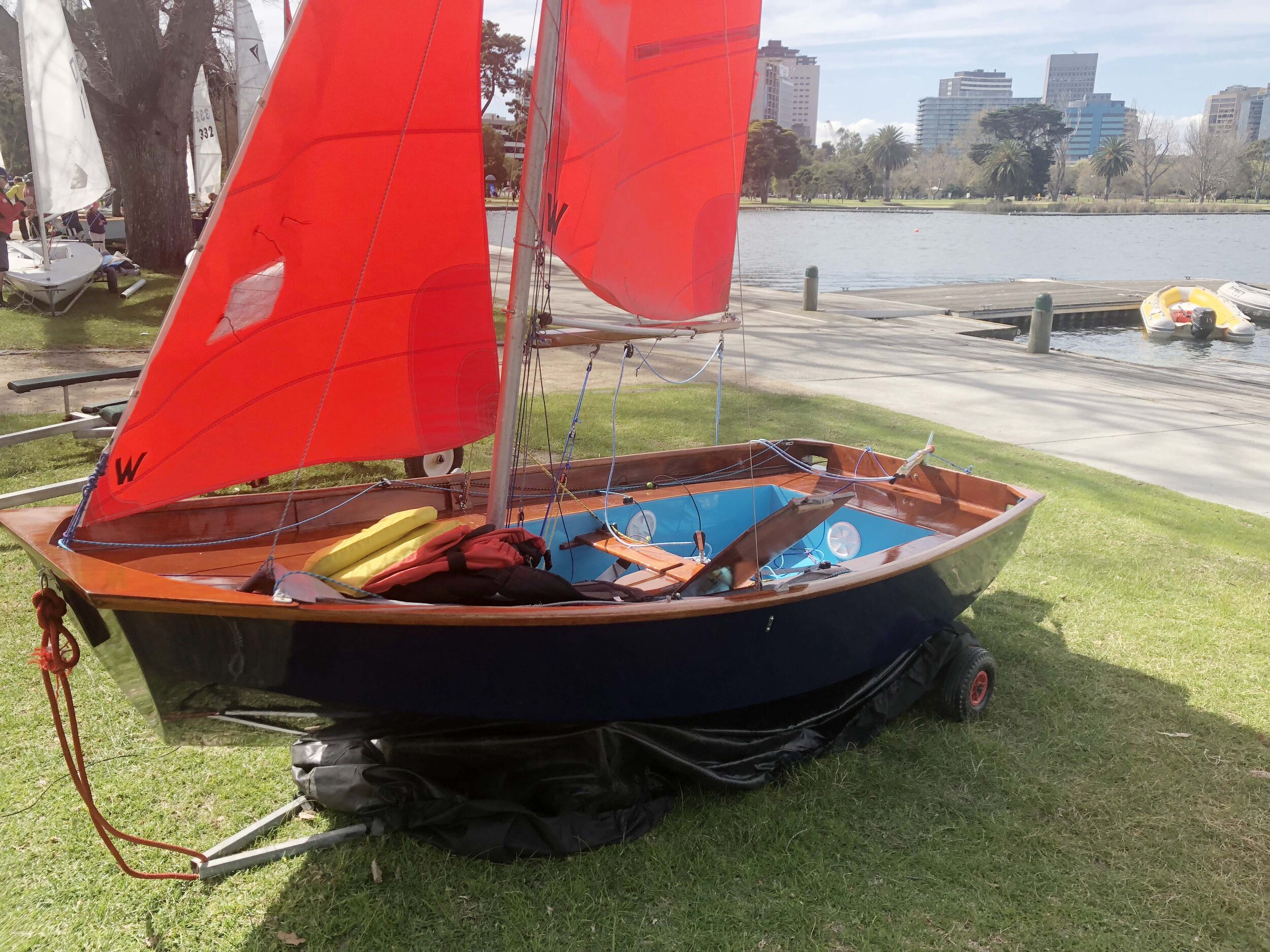
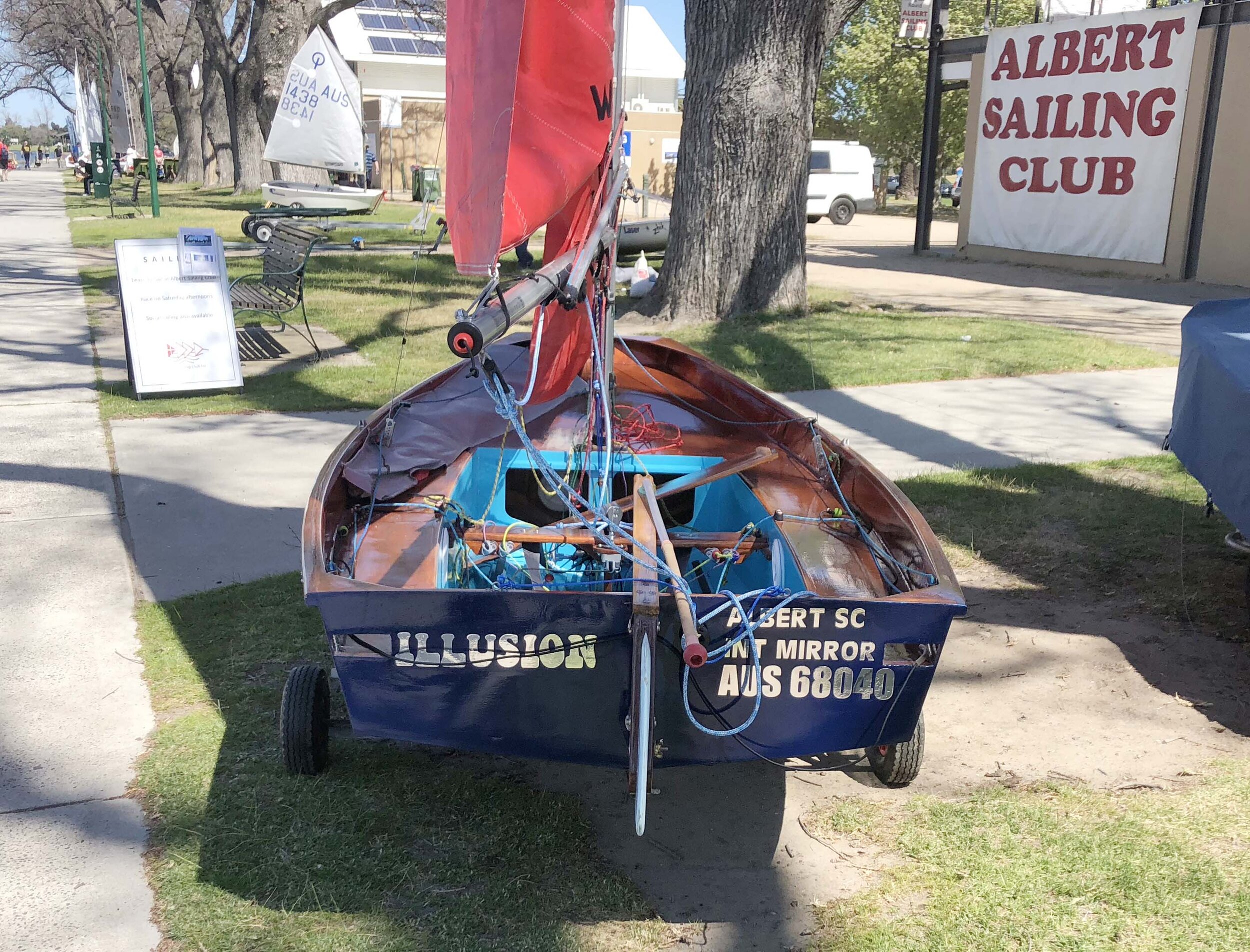
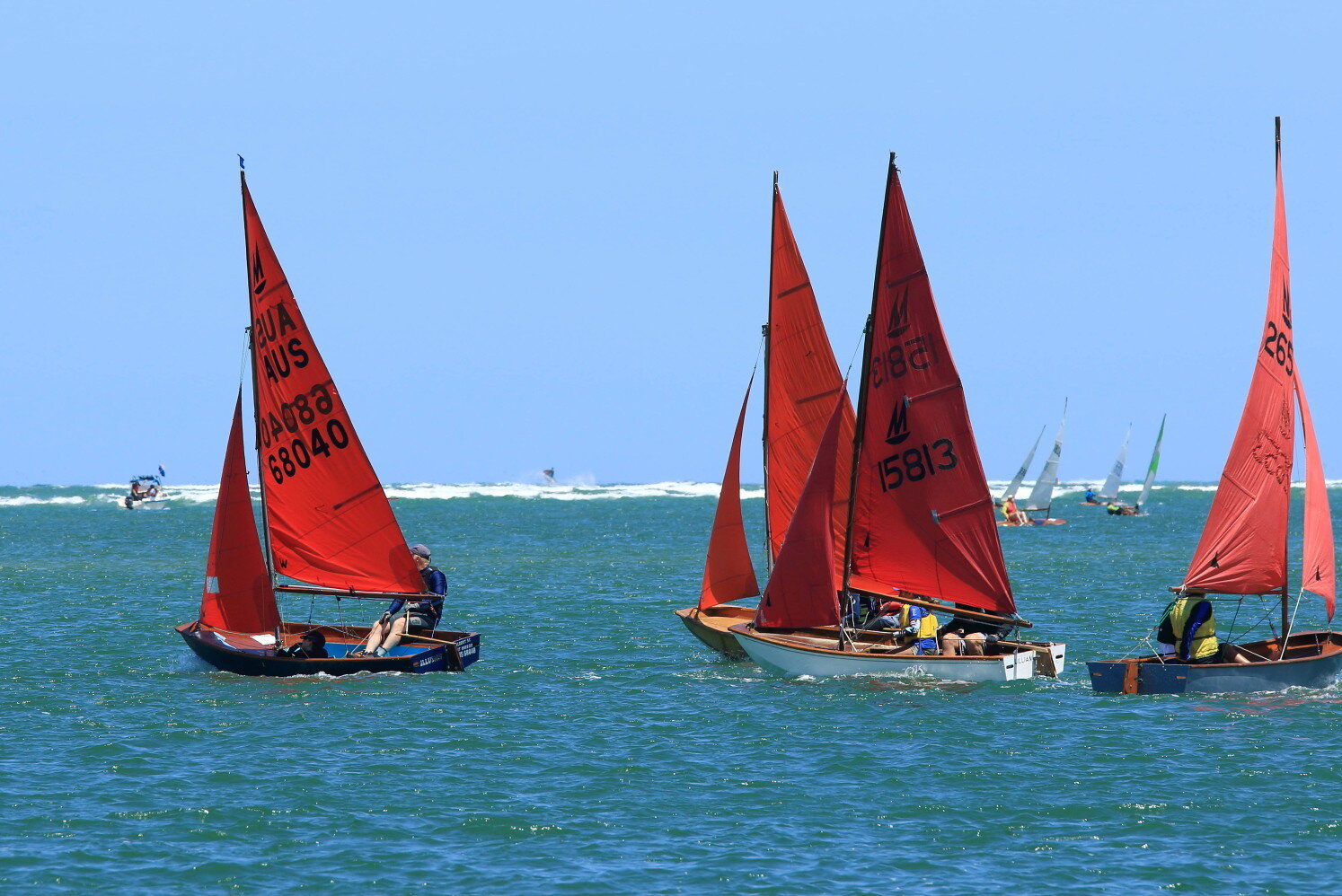
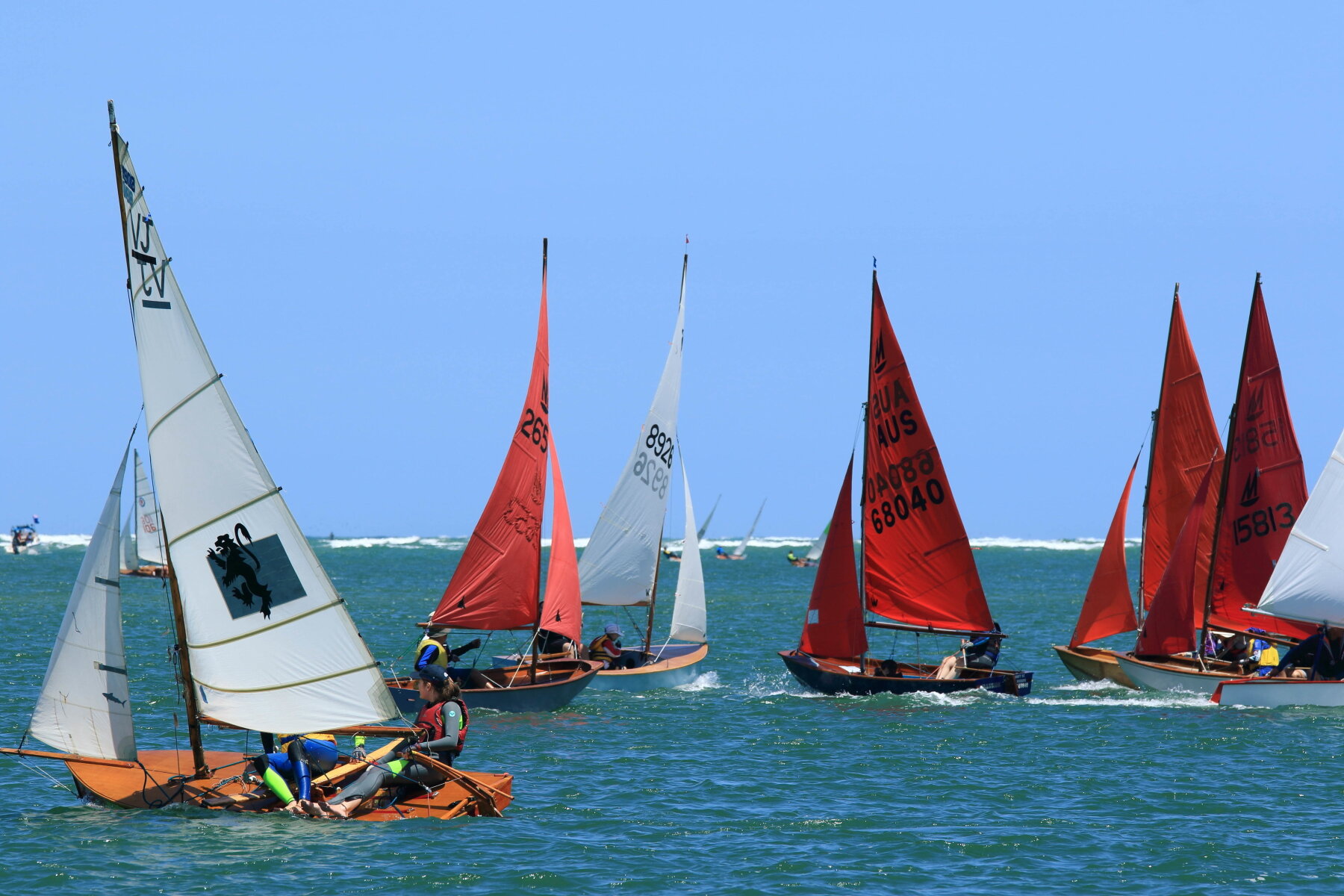
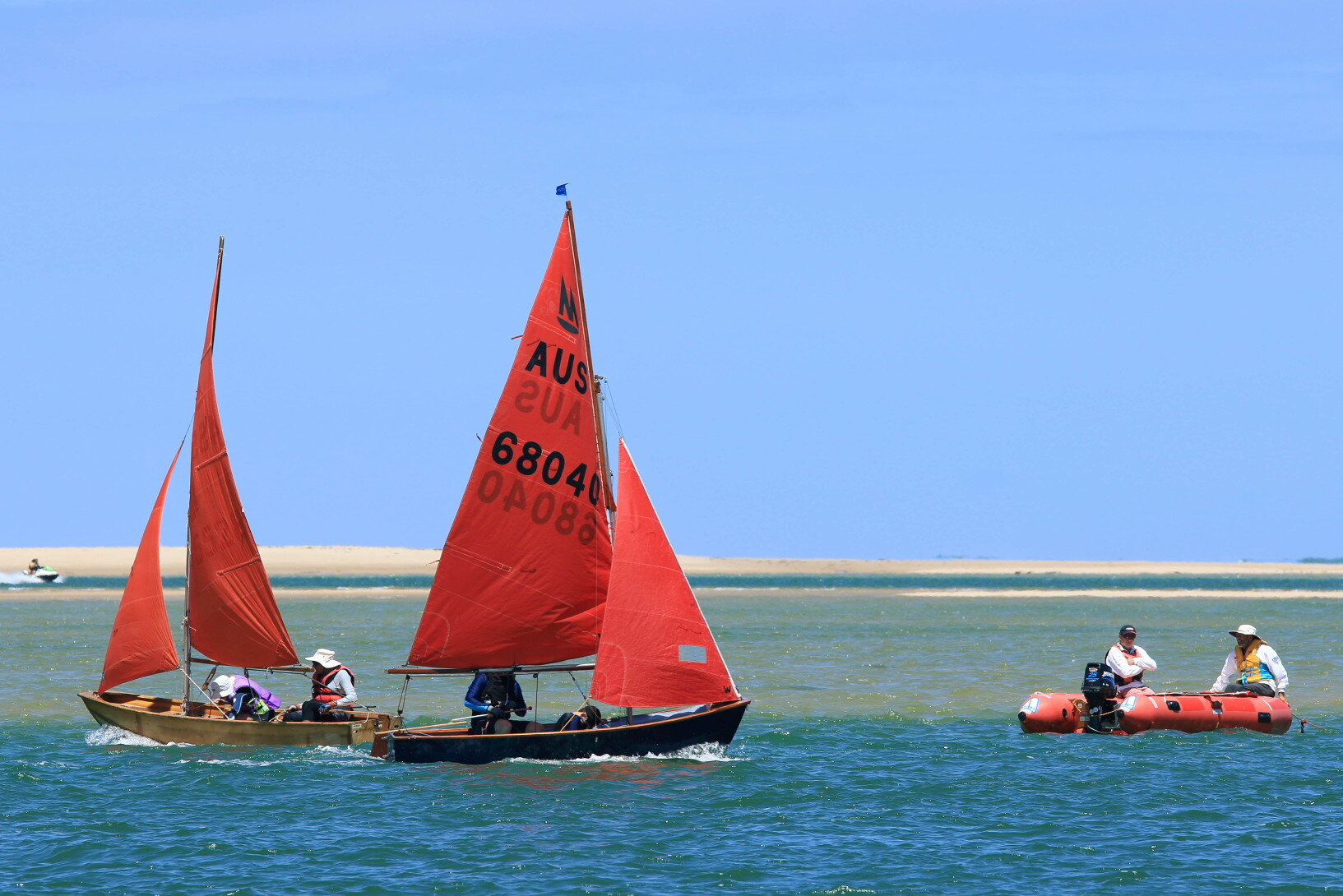
Mirror fleets became the training ground for many of Australia’s leading dinghy and keelboat sailors. Sailors such as Tessa Parkinson World 420 Champion and Olympic Gold Medallist, Nick Rogers multiple Australian and World Dragon Champion, John Dransfield multiple Australian and World Fireball Champion and current World Mirror Champion with son Tyler crewing and Tom King Australian and World Mirror Champion, 470 Olympic Gold Medallist and World Etchell Champion, were all Mirror juniors.
By Charlie Salter and Jaemie Wilson
C.S. has a 1969 Blockey boat ZENA in storage
J.W. actively sails his classic Mirror ILLUSION and a fibreglass Mk2 NO CHANCE
//


